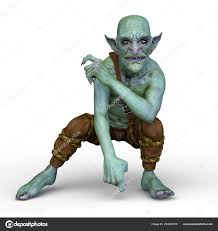What is 'a goblin'? This would be a possible definition: (in folklore and fantasy fiction) a mischievous, ugly creature resembling a dwarf.
What does 'goblin mode' mean? I'll give you some clues: it is related with people and what happened during the Covid-19 pandemic.
Well, watch this BBC Learning English episode (News Review), where they explain 'Goblin mode', which may become the word of the year.
Well, watch this BBC Learning English episode (News Review), where they explain 'Goblin mode', which may become the word of the year.
Some activities for you to do:
Learn how to speak English naturally: How to show understanding (BBC Learning English)
A listening exercise for you to do: Controlling the weather (6 Minute English, BBC Learning English)
English in a Minute: How to use CERTAIN (BBC Learning English)
The English We Speak: Eat your words! (BBC Learning English)
Some articles for you to read about this 'Goblin mode':
‘Social recession’: how isolation can affect physical and mental health (The Guardian)
Long-term social distancing may be traumatic. Here is what to expect and what to do (CNN Health)
Coronavirus: The possible long-term mental health impacts (BBC News)
‘A sacrificed generation’: psychological scars of Covid on young may have lasting impact (The Guardian)
Mental Health Effects of the COVID-19 Pandemic on Children and Adolescents (National Center for Biotechnology information)
Covid: The devastating toll of the pandemic on children (BBC News)
Here's my musical hint connected with the issue: Just an illusion by Imagination. Here's a version with the lyrics for you to sing along!!
And if you are a goblin and like living on your own, you'd better learn how to make a sandwich yourself:
Can you tell me how you make yourself your favourite sandwich (remember to use the PASSIVE VOICE if you are in 4º ESO) ?
"All work and no play makes Jack/Jill a dull boy/girl"
Mind Your Language - Playing darts







The word 'goblin' comes from the Germanic language and Old English. Both derive from the Germanic word gadi, which means 'to beg.' This suggests that the original meaning of 'galdan' was 'to beg' or 'to request.' The word originated as an A.N.D.A. translation of the Greek name Gk. Gobinos.
ResponderEliminarAlthough the concept of goblins originates in the Greek mythology, some wise people think that the original form of this term mean they were bad and strange animals. In my opinion I don't like them very much, because of their appearance and because of what they talk about them
Oliver Lozano 4ºA
A goblin is a little goblin, a fantastic being but with the pandemic people are looking like them
ResponderEliminar"Goblin mode" is a type of behavior that is lazy, lazy, or selfish in a way that rejects social norms and expectations." Its ugly.
Also known as green dwarfs, goblins are very cheeky, which is why they are also used in fantasy movies.
Andrea Romera Noguera 1ºB
goblin mode" as "a type of behavior that is blatantly self-indulgent, lazy, lazy, or selfish in a way that rejects societal norms and expectations
ResponderEliminarAITOR VIDOY VALENZUELA 1ºESO A
Today there are many goblins because after the Covid-19 all the children have become more malefic and evil, before they went out more to the streets and cared more about things today they don't even go out and don't even care for their homework
ResponderEliminarLucía Beatriz Petrut 1º B
One question,why do you say that we have become goblins?
ResponderEliminarMohamed Amin Briouel El Fachati 1°B
Small, ugly beings, with serious dental problems, naughty, greedy, clever, snide and generally green-skinned, the goblins are fantastic creatures which we have described for hundred of years wiht these characteristics and many others.
ResponderEliminarFor his part, the oldest register of the word "goblin" comes from the 14th century, in the late Middle Ages. However, its original root comes from further back, at least from the 12th century with the Latin "cabalus" or "gobalus", deriving from Greek "kobalos" (means errant or rogue). From there, it evolved into "gobelinus", and then to the Normain "gobelin" and Old French, and finally arriving to Spanish.
These creatures they have hundred of years of existence, the problem is that they arose orally from stories and tales. For this reason, the exact date of the beginning of these being in European culture is unknown. Some historians say that the goblin it's a mix between Celtic creatures, as the Irish leprechaun and the Scottish brownie, with others like the kobold, which comes from Germanic folklore; others, in contrast, insist that it derives only from the Celts, and what a time later, was adopted by the Anglo-Saxons.
Adrián García 4ºA